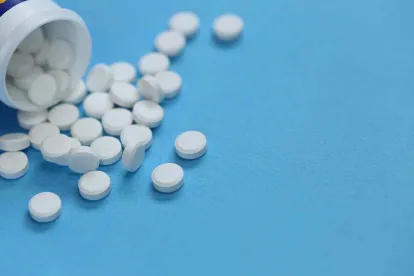INTRODUCTION
The recent decision of the Delhi High Court (“Court”) in Astrazeneca Ab & Anr v. Intas Pharmaceuticals Ltd.1 makes some significant findings on the issue of double patenting. The decision deals with Astrazeneca AB’s (“Astrazeneca”) patents IN 205147 (“IN 147”) and IN 235625 (“IN 625”) (together, the “Patents”) which cover the product compound ‘Dapagliflozen’ (“DAPA”). Below is a brief summary of the decision and its key takeaways.
FACTS
-
Plaintiff no. 1 is AstraZeneca AB Sweden and Plaintiff No. 2 is AstraZeneca Pharma India Ltd (together, the “Plaintiffs”).
-
Both the Patents were originally granted to Bristol Myers Squibb Company subsequent to which Plaintiff No. 1 acquired them and hence, the Patents currently stand registered in the name of Plaintiff No. 1. IN 147 was valid till October 4, 2020, while IN 625 is valid till May 15, 2023.
-
Before the expiry of the twenty-year term of IN 147, suits for infringement in relation to both Patents were filed against Micro Labs Ltd, Ajanta Pharma Ltd, Intas Pharmaceuticals Ltd, Torrent Pharmaceuticals Ltd and Alkem Laboratories Ltd. Further, after the expiry of IN 147, a suit for infringement IN 625 was filed against MSN Laboratories, USV Pvt Ltd, Zydus Healthcare Ltd, Zydus Medica and Eris Lifescience (together, the “Defendants”).2
-
The Plaintiffs had argued before the Single Judge and Division Bench that:
-
DAPA is disclosed in IN 147, but it is claimed only in IN 625. The Plaintiffs also argued that IN 147 is the genus patent which only covers the core structure/the Markush claims whereas IN 625 is the species patent specifically claiming DAPA.
-
DAPA was invented only in the year 2001 and is separately protected as an invention under IN 625, distinct from the genus invention.
-
-
In the suits, the Defendants challenged the infringement claim on several grounds, including the ground that IN 625 itself was invalid. The Defendants argued that since DAPA is covered under IN 147 as per the Plaintiffs’ admission, IN 625 could not have been granted for the same invention. Therefore, IN 625 was not valid in the first place and hence, no injunction could be granted qua IN 625.
-
The Defendants also argued that since IN 147 had expired, there could be no injunction qua IN 147 as well.
In both the suits, separate benches of Single Judges denied injunction. However, the Defendants were directed to place on record (i) the details, quantum and value of the drug manufactured and sold; (ii) indirect and direct taxes paid; as well as (iii) their assets, from which the damages, if any awarded against them, could be recovered. Plaintiffs challenged the decisions in appeal.
-
In both the suits, separate benches of Single Judges denied injunction. However, the Defendants were directed to place on record (i) the details, quantum and value of the drug manufactured and sold; (ii) indirect and direct taxes paid; as well as (iii) their assets, from which the damages, if any awarded against them, could be recovered. Plaintiffs challenged the decisions in appeal.
The Division Bench refused to reverse the decisions of the Single Judge and dismissed appeals for the following reasons:
-
IN 147 and IN 625 cannot cover the same compound: The Court noted that the Plaintiffs themselves have pleaded that manufacture of DAPA by the Defendants amounts to infringement of both, IN 147 and IN 625. If DAPA was not disclosed and/or known at the time of seeking patent IN 147 and was only invented subsequently and patented under IN 625, there could be no infringement of IN 147 by manufacturing and/or selling DAPA by the Defendants. Once the Plaintiffs claimed infringement of IN 147 also, it necessarily followed that DAPA was a subject matter of IN 147. The Court noted that with respect to one invention, there can only be one patent.
-
No technical advancement claimed in IN 625: The Court noted that for IN 625 to be with respect to a 'new product' and involving an inventive step over IN 147, the description of IN 625 should have described the technical advancement over and/or the difference in efficacy from what was disclosed in IN 147. However, the Court noted that the complete specification of IN 625 does not disclose any technological advancement and/or difference in the efficacy over the invention in IN 147. In fact, the field of invention under the respective specifications of the Patents was exactly identical. Interestingly, the Court noted that the inventor of both patents is the same. Such inventor is best-placed to know the inventive step involved in IN 625 and even then no such inventive step had been set out in the description.
-
Disclosures under Form 27: The Court noted the argument of the Defendants that Plaintiffs, in the working statement in Form 27 filed in relation to IN 147 have claimed that IN 147 has been worked in India and reported manufacture and sale of DAPA in support. However, the Court did not go into this submission in detail.
-
Reliance on US patent prosecution history: The Defendants pointed out that there was an objection by the US Patent and Trademark Office (“USPTO”) to the application of the Plaintiffs corresponding to IN 625 in India, on the ground of prior claiming i.e. obviousness-type double patenting; the Plaintiffs did not contest the said objection. On the contrary, the Plaintiffs agreed to the term of patent thereunder to be coterminous with the term of the patent corresponding to IN 147. The Court noted that once the Plaintiffs applied for and agreed to the validity period of US patent equivalent of IN 625 ending on the same day as the validity period of the US patent equivalent to IN 147 before the USPTO, the Plaintiffs, are not entitled to claim different periods of validity of the two patents in India.
In addition to the above, the Court also noted that the tests of "obvious to a person skilled in the art", "anticipation by publication" and "use before the date of filing of patent application with complete specification", in the context of an earlier patent and its specifications have to be different when the inventor of both is the same. The tests have to be in the context of the “person in the know”, and not of a "person ordinarily skilled in the art". The inquiry, in such a situation, has to be guided by whether the inventor, while writing the first patent application, knew of the invention claimed in the subsequent patent.
CONCLUSION
KEY TAKEAWAYS
-
Selection Patents: The Court has not specifically held that selection patents are not allowed in India. In the decision of the Single Judge dated November 18, 2020, it was held that a selection patent which though covered under the Markush formula and is not disclosed clearly and unambiguously in the Markush formula, can also be granted a valid patent provided that such a selection patent shows substantial advantage or avoidance of disadvantage over the genus patent, by use of the selected members of the species patent. The Division Bench has not specifically dealt with this finding of the Single Judge’s decision dated November 18, 2020. Therefore, this decision does not completely rule out the possibility of grant of a selection patent. The Division Bench has also considered whether there is any technical advancement in IN 625 over IN 147. Therefore, if a selection patent is able to show a technical advance over the genus patent, the patent could be granted.
-
Form 27 disclosures: In this decision, there is a brief mention of details of the same drug being disclosed in the working statement of two patents. While preparing Form 27s, patentees must be careful in providing details of working of a patent. It is possible for two or more patents to claim working on the basis of the same drug in some cases such as different patents for the product and process of preparing the product. But if the same product is claimed in two patents, it might lead to an adverse finding regarding the validity of the patents.
-
Person in the know: The Court has held that in a situation where an earlier patent naming the same inventor is cited as prior art for a later patent application with the same inventor, a higher threshold of a “person in the know”, i.e., the inventor herself should apply. However, the Court has not clarified (i) what this threshold would be, or (ii) how the Patent Office should use this threshold during examination. It will also be interesting to see how this observation of the court is received by the Supreme Court if this decision is appealed.
-
Prosecution history: The Defendants in this case and the Court has relied heavily on admissions made before the USPTO by the Plaintiffs. Therefore, when prosecuting patents and litigating, patentees must be mindful of disclosures and/or admissions made in all jurisdictions.
FOOTNOTES
1 In FAO(OS) Comm No. 139/2020; 140/2020; 155/2020; 156/2020; 157/2020; 158/2020; 159/2020; 160/2020 and 161/2020
2 CS(COMM) No.410/2020; CS(COMM) No.411/2020; CS(COMM) No.323/2020; CS(COMM) No.346/2020; CS(COMM) No.414/2020; CS(COMM) No.418/2020; CS(COMM) No.419/2020; CS(COMM) No.426/2020; CS(COMM) No.154/2020





 />i
/>i

